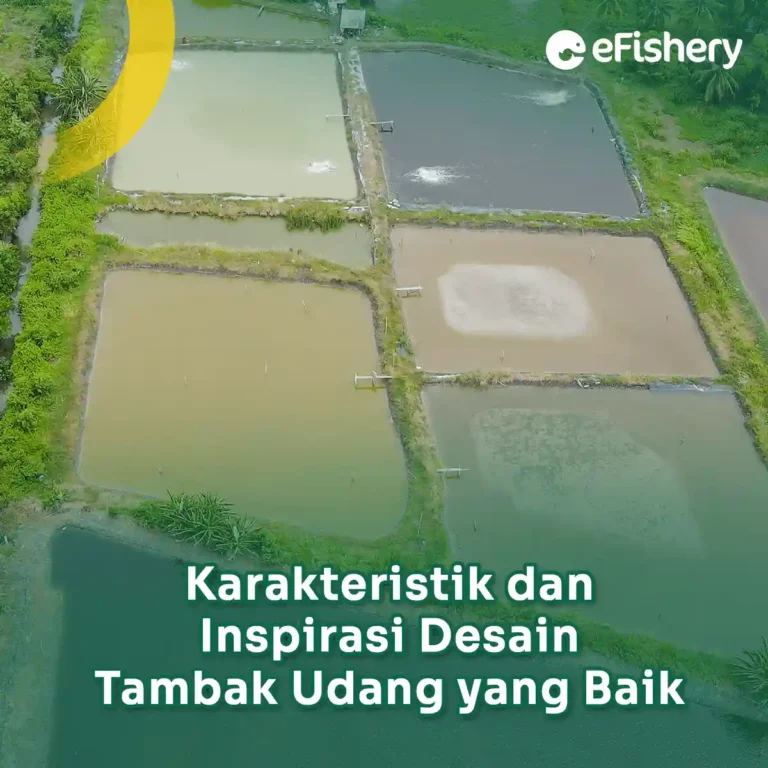Artikel Ini Telah Direview Oleh:
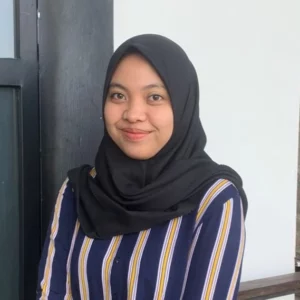
Nabilla Anggi
Magister Budidaya Perairan
Shrimp pond design is an important aspect in the process of building a farming business. The high value of survival and production of shrimp aquaculture is closely related to its biotechnical aspects. The biotechnical aspect consists of:
- Cultivation techniques
- Site selection
- Pond construction (slope, bunds, embankments, channels and layout)
- Infrastructure
- The cultivation system used starts from pond preparation to post-harvest management.
For more information, you can read more here!
Pond Map Design
Making pond plot designs requires good consideration in order to function efficiently and be economically feasible. The purpose of the pond plot design is to facilitate the management of water and waste during cultivation, as well as harvesting of shrimp. Map design is an initial plan that includes:
- Pool bottom slope
- Pool wall slope
- Type of pond to be used (soil/concrete/plastic)
- Pool shape (round/square/rectangular; try to minimize dead spots in the pool)
- Central drain (middle exhaust)
- location inlet (water entrance)
- The length and width of the plot
- Map depth
- Bund size
- Channel size around the map
On rectangular plots, the longest side should be less than 150 m so that the entry of water from one side to the other can cause a fairly strong current. In addition, the longest side of the map should be perpendicular to the direction of the wind so as not to cause too strong waves of water. If it is parallel to the wind direction, the water waves in the plot become strong and can damage the bunds.
Extensive or traditional ponds usually require a perimeter ditch for shrimp shelter. In general, canals around have a depth of 0.3 m and a width of 3-5 m (depending on the size of the pond). The distance between the canal around and the foot of the bund is made with a size of about 2 m. Below are side and top views of an example of an extensive or traditional pond design:
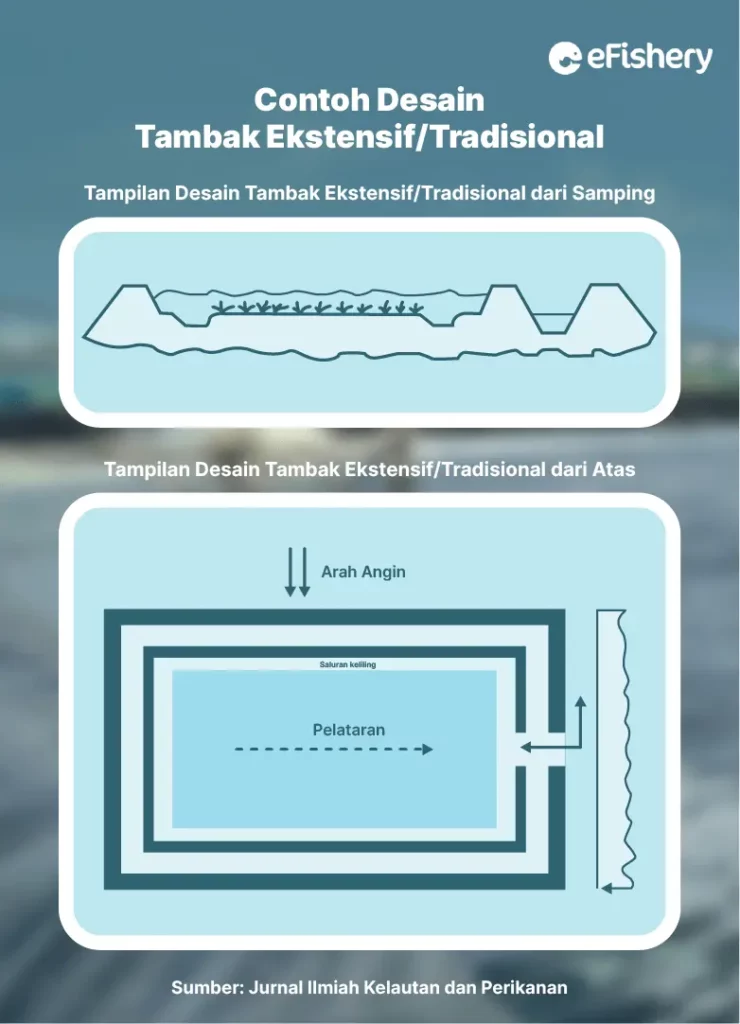
Semi-intensive ponds often do not require a perimeter ditch because the water depth is sufficient. Circular canals are only used to dispose of stagnant water during pond preparation. Therefore, the width is smaller than traditional ponds. The following is a side and top view of an example of a semi-intensive pond design:
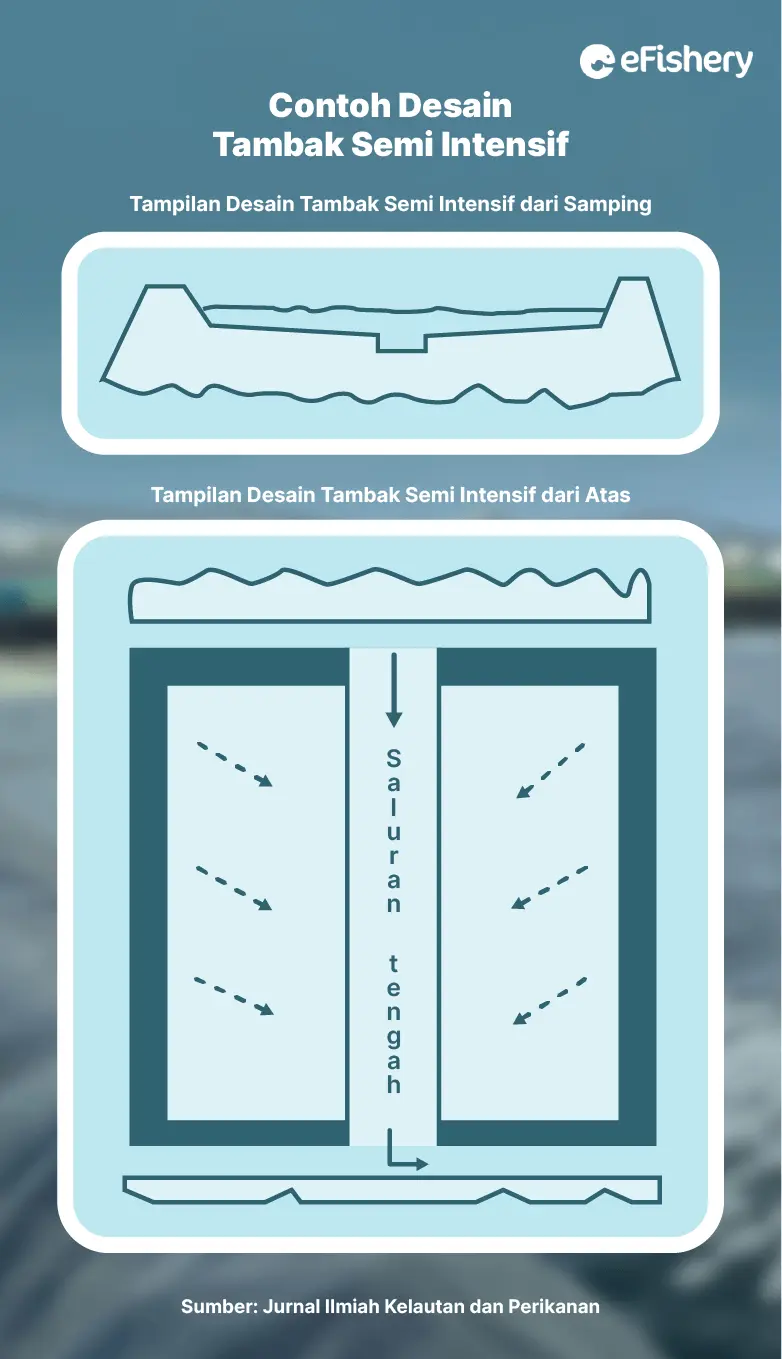
Intensive ponds do not need a perimeter ditch, but need a central drain or central drain. The following is a side and top view of an example of a semi-intensive pond design:
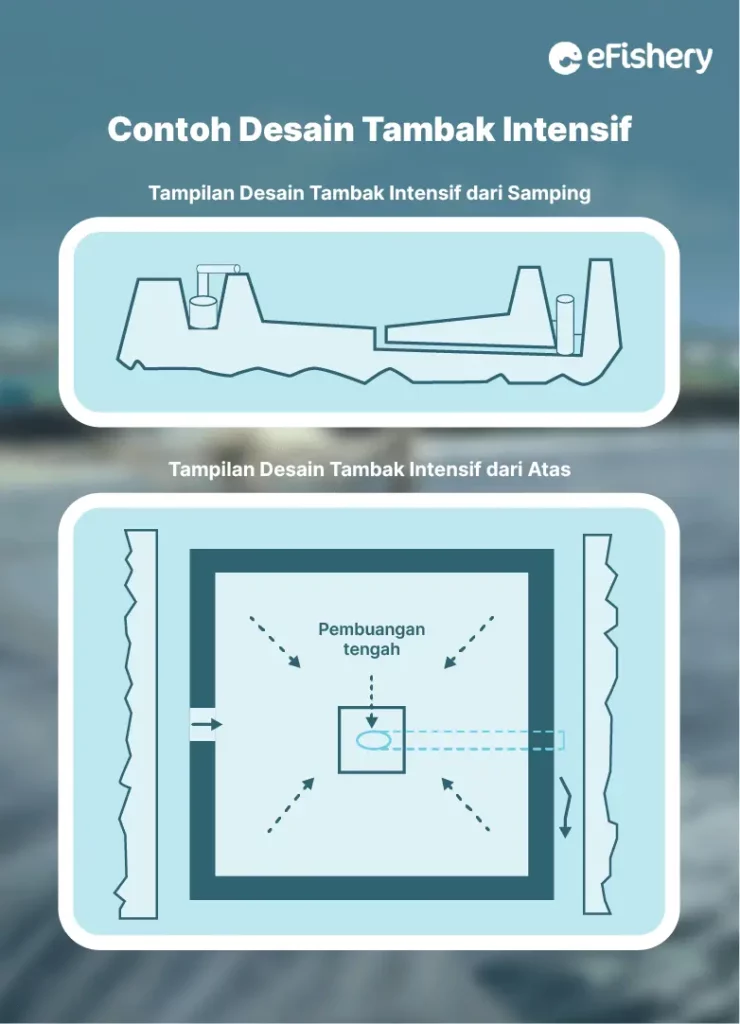
Shrimp Pond Design Construction Requirements
Persyaratan dan konstruksi tambak udang berbeda di tiap sistem budidayanya. Indikator pembeda dari persyaratan dan konstruksi tiap sistem budidaya, yaitu luas petak, bentuk petak, tanah dasar, saluran dalam tambak, dan pematang (bahan, kemiringan, pintu air, dan kedalaman).
The following is a table of shrimp pond requirements and construction based on the cultivation system:
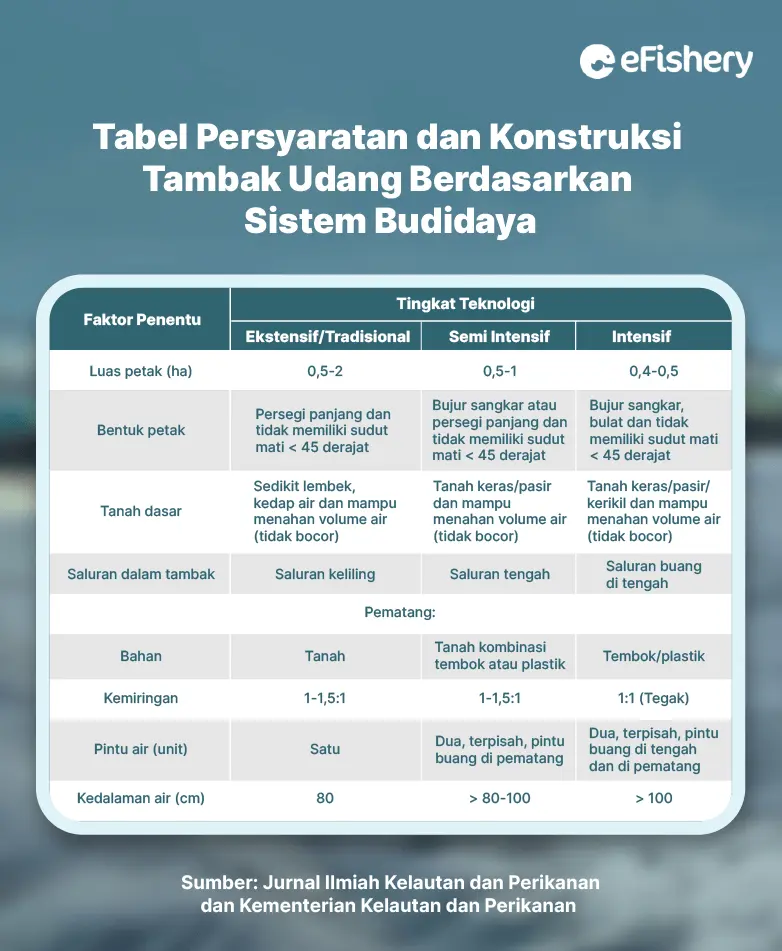
Tips for Making a Shrimp Pond Design
After discussing the design of the pond plots and pond design requirements, let's discuss tips so that the design of the shrimp ponds that you make is more optimal.
Here are tips on making a shrimp pond design:
- Determine the location of the cultivation business plan
- Pay attention to land feasibility and soil type because it will affect pond construction and operations
- Determine the cultivation system to be applied
- Carefully calculate the size and layout of the aquaculture pond
- Pay attention to the important components in the pond such as drains, floodgates and bunds
Free Consultation About Planning Shrimp Ponds Through the eFarm Application
Need Help Regarding Shrimp Cultivation Business?
Fill in your personal data in the following form. Our team will immediately contact you via the number cellphone attached. Make sure the data entered is correct.
Initial planning and suitability of technical aspects in terms of construction are one of the factors for successful cultivation, so proper planning is needed before starting a cultivation business. You want to plan a cultivation business but are confused about how to do it? eFarm is the solution!
eFarm is an application that provides various solutions for those of you who want or currently have a business in the field of shrimp farming. This application provides features that can help you solve shrimp farming problems, one of which is a feature Cultivation Consultation. Feature Cultivation Consultation is a feature that can connect you with aquaculture experts to consult about shrimp farming, for example how to maintain water quality or how to make shrimp ponds suitable for your business.
Let's join thousands of other shooters at eFarm right now!

Nabilla Anggi - Magister Budidaya Perairan
Nabilla merupakan lulusan sarjana dan magister budidaya perairan serta memiliki pengalaman di dunia perikanan baik hatchery maupun pembesaran
Questions Regarding Shrimp Pond Design
Extensive/traditional ponds have a pond area of 0.5-2 hectares/plot. Semi-intensive ponds have a pond area of 1 hectare/plot, while intensive ponds have a maximum pond area of 0.5 hectares/plot.
Several things that must be considered in pond construction design, namely soil type, pond area, pond shape, water depth, slope, and channels in the pond.
- Choeronawati, AI, SB Prayitno and Haeruddin. 2019. Feasibility study of pond cultivation in coastal lands of Purworejo district. Journal of Tropical Marine Science and Technology. 11(1):191-204.
- Marine and Fisheries Ministry. 2016. General guidelines for enlargement of tiger shrimp (Penaeus monodon) and vannamei shrimp (Litopenaeus vannamei).
- Mustafa, A. 2008. Pond design, layout and construction. Aquaculture Media. 3(2):166-174.
